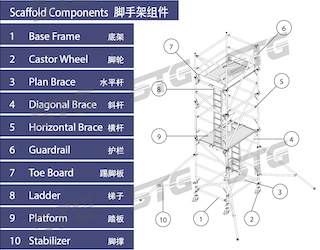Singapore’s construction industry has witnessed remarkable growth in recent years, fueled by rapid urbanization, infrastructure development, and a robust real estate market. At the heart of this flourishing sector lies the scaffolding industry, playing a pivotal role in supporting construction projects and ensuring safety for workers. This article delves into the scaffolding sector in Singapore, exploring its key features, growth drivers, regulatory framework, and the evolving trends shaping its future.
Scaffolding Solutions Catering to Diverse Construction Needs
Singapore’s construction landscape encompasses a diverse range of projects, including high-rise buildings, residential complexes, commercial spaces, and infrastructure developments. Scaffolding companies in Singapore offer a wide array of solutions tailored to meet the unique requirements of each project type.
Emphasis on Safety Standards and Regulations
The Singapore government places great importance on safety in the construction industry, including scaffolding operations. Stringent safety regulations and guidelines are in place to protect workers and minimize accidents. Scaffolding companies are required to adhere to these standards and ensure compliance in all aspects of their operations.
Technological Advancements and Innovative Practices
The scaffolding sector in Singapore has embraced technological advancements to enhance safety, productivity, and efficiency. Digital tools and software are being utilized for better project planning, design, and management of scaffolding systems. Innovative practices such as prefabrication and modular scaffolding solutions are gaining traction, enabling faster assembly and dismantling.
Skilled Workforce and Training Initiatives
A skilled workforce is crucial for the success of the scaffolding sector. Singapore has implemented comprehensive training programs and certifications to ensure that scaffolding professionals possess the necessary skills and knowledge. These initiatives focus on competency development, safety awareness, and continuous learning to maintain high industry standards.
Sustainable Scaffolding Practices
In line with Singapore’s commitment to sustainability, the scaffolding sector is witnessing an increasing focus on eco-friendly practices. Companies are phasing out timber scaffolding to save the mangroves in Indonesia, recycling initiatives of used metal materials to reduce environmental impact. Green scaffolding practices are becoming a key consideration for both the government and contractors.
Collaborative Approaches and Industry Partnerships
Collaboration between scaffolding companies, contractors, and other stakeholders is instrumental in driving innovation and fostering best practices. Industry partnerships and knowledge-sharing platforms facilitate the exchange of ideas, promote industry standards, and contribute to the overall growth and development of the scaffolding sector in Singapore.
Conclusion
The scaffolding sector in Singapore stands as a vital pillar supporting the booming construction industry. With a strong emphasis on safety, innovative practices, skilled workforce, and sustainable approaches, scaffolding companies are playing a crucial role in ensuring the success of diverse construction projects. As Singapore continues to grow and develop, the scaffolding sector is poised for further advancements and is well-positioned to meet the evolving needs of the construction landscape.






